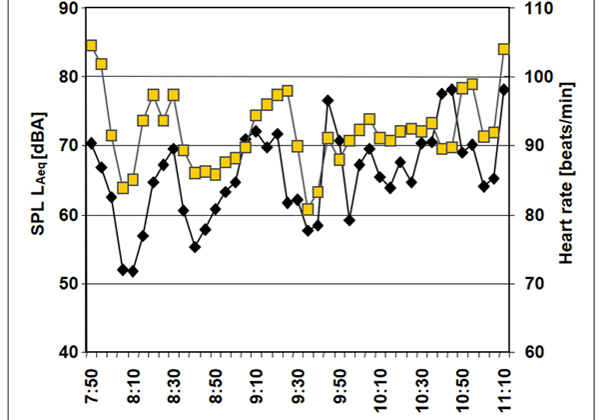
This is not new, however it is a fundamental aspect to consider when designing optimal sustainable indoor environments.
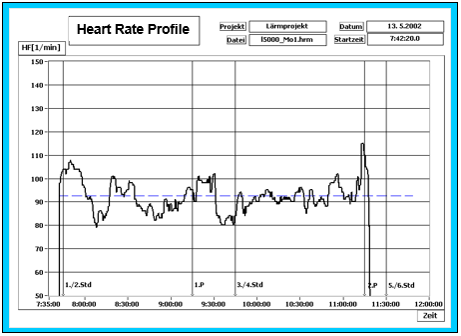
By measuring/recording the heart rate of teachers, an indicator of stress was apparent in lessons and also over a longer more sustained period.
Here is a short insight overview on stress as stated by ASA (American Heart Association):
The body responds in numerous negative ways to stress…
According to the ASA – your body’s response to stress may be a headache, back strain, or stomach pains. Stress can also zap your energy, wreak havoc on your sleep and make you feel cranky, forgetful and out of control.
A stressful situation sets off a chain of events.
Your body releases adrenaline, a hormone that temporarily causes your breathing and heart rate to speed up and your blood pressure to rise. These reactions prepare you to deal with the situation — the “fight or flight” response.
What about teachers, teaching in a poor classroom environment?
When stress is constant, your body remains in high gear off and on for days or weeks at a time. Although the link between stress and heart disease isn’t clear, chronic stress may cause some people to drink too much alcohol which can increase your blood pressure and may damage the artery walls.
Looking at how sound levels and heart rate correlate it is clear that improved room acoustics, not only lower the sound levels and teacher heart rates, it actually reduces their stress workload day after day, year after year in good acoustic conditions.
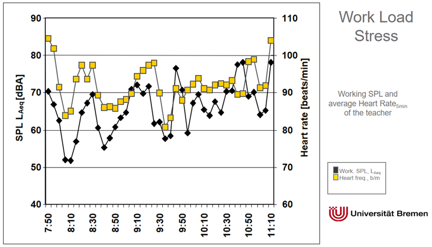
Heart rate is a medically recognised stressor – what is meant by stress in this context?
Basic stress response – Our everyday experience is enough to tell us that the heart rate beats faster when one is involved in physical activities e.g. running or climbing stairs than when one is lying down and relaxing. The state of physical excitation produces a similar reaction, e.g. when one is angry or happy, i.e. when one is experiencing strong emotions. The cardiovascular system thus responds continuously to any demand that is placed on the organism, even by cognitive processes that do not entail strong emotional stimulation.
A continuous record of the heart rate can indicate the extent and record the changing psychophysical situations that the affected person has endured…
This study looking into heart rate implications was based on a series of established models.
These set out the overall context for the teacher’s working environment including; the teaching activities and how to monitor and interpret the recordings over the school day and over a much longer long term period.
This modified “School work system” below incorporates how the working environment is affected by the physical and social environment (environmental stress) and the teacher’s activity and interaction with the students.
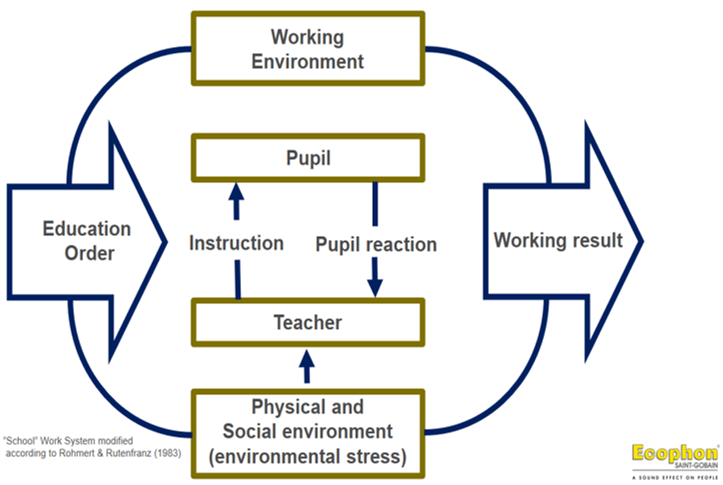
A further stress model used identifies the aspects which are then assessed in stages before a final assessment can be made.
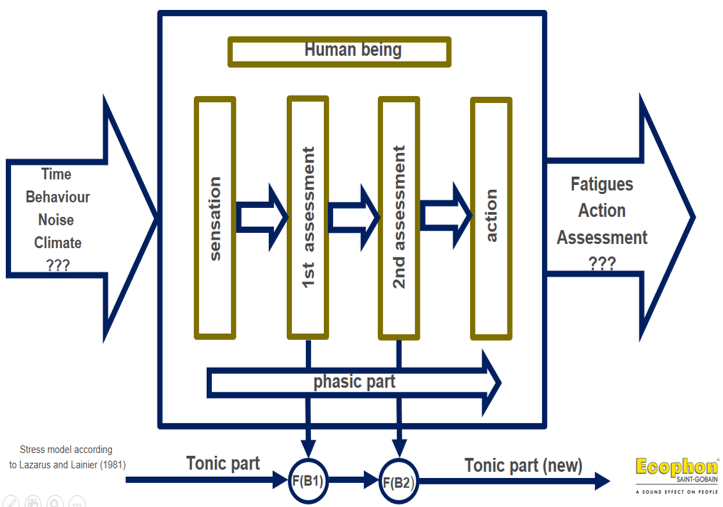
In more depth the modified “stress-inducing effects of noise” acts as a feedback look to identify dysregulation and ultimately and unsustainable chronic dysregulation.
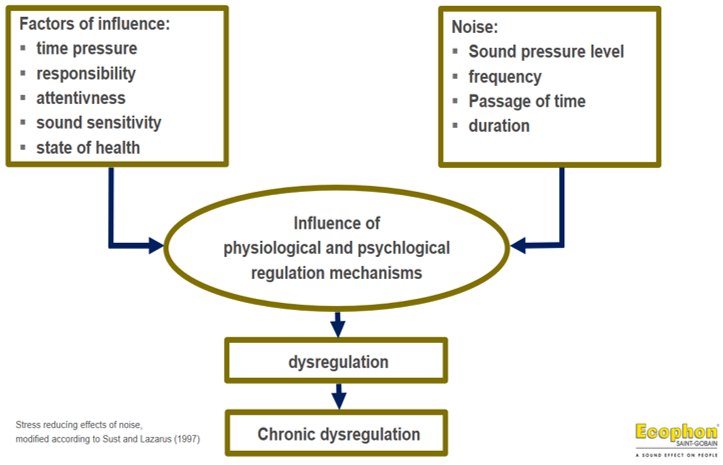
This measured the work place analysis comprised of the working task, the working environment and the working conditions along with the personal characteristics of the persons involved. In the context of psychophysical stress; manifestations as corporeal (physical) events which in many cases are triggered or modified by mental (psychological) processes. An analyzed of stress responses within a defined and audited / observed work process. Occupational health recognizes reading of pulse or heart rate with mobile ECG recorders as a preferred means of indicating stress. This gave the study the necessary unlimited mobility of test subjects and the virtual imperceptibility of the device when in use.
Objective measurement of stress:
• A basic activation: tonic part which can change throughout the day or lessons due to the fatigue process. The basic level of activity is determined as a minimum heart rate value within a defined time interval. Recording a rate every 15 sec. avoided the necessity for any mediation to eliminate respiratory arrhythmia. The basic value signals the prevailing basal activation level during the observed period (the degree of psychophysical “excitation”.)
• Stress: The variation of heart rate in response to the actual stress is called the phasic part and is obtained from the average of the heart rate values measured every 15 sec. over the selected time interval.
The study investigated whether a relationship exists between room acoustic conditions and personal stress in comparable working conditions.
To feel good, human beings need a healthy balance between activation (heart rate up) and fatigue (heart rate down).
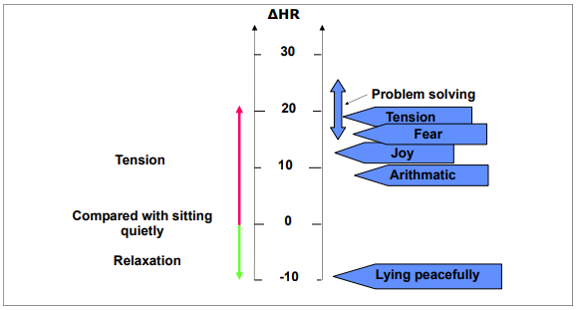
In the better acoustic condition (here 0.45s) we see such a balance. However in the worse situation (0.6 sec.) we can see more fatigue and less activation. See the RT & workload – Fatigue and Activation diagram below. (Field School; all teachers, all lessons)
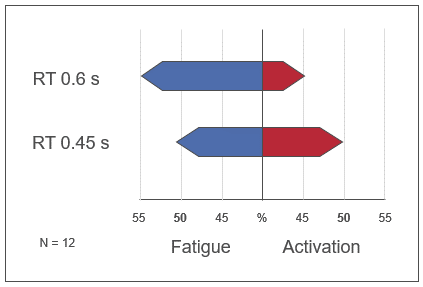
The Workload reaction findings were clear, the lower the Working SPL (noise), the lower the heart rate of the teacher. This correlation of r=0.55 is statistically very high in occupational medicine, because there are so many other things that might influence the heart rate!
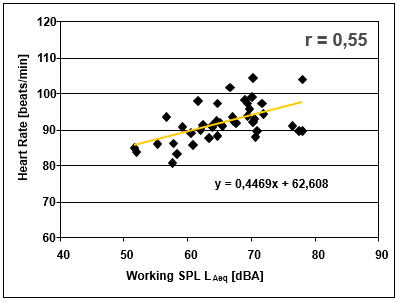
Looking at the stress reaction to strain factor noise, before and after:
A 10dB increase in the 0.7s classroom increased the teacher heart rate by 10 bpm as opposed to a 4 bpm increase in the 0.4s classroom (See below). The synoptic link with the trends of individuals shows a clear relationship between stress response and “noise” in teaching.
The was a tendential dependency apparent when the working SPL in teaching dropped due to improved room acoustics then the stress of individual teaching staff dropped simultaneously. The teacher’s heart rate was 10 bpm less when teaching during a 5-10 dB quieter lesson with the same class and subject.
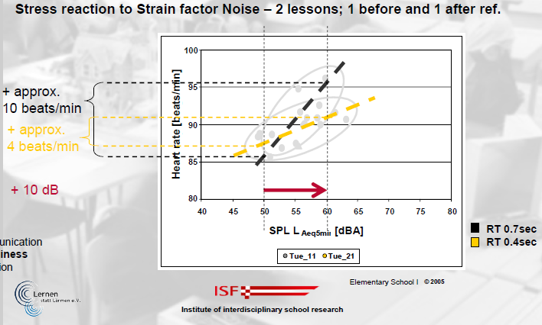
Due to the reduced noise level in teaching, the ergonomic parameter and impact of the room acoustics was reflected doubly in the stress of the teaching staff. Along with the recorded reduction of the average heart rate, “sensitivity to noise” also changed. Under the refurbished and improved acoustic conditions, the factor of noise was observed to have a less stressful effect. The teaching staff responded physiologically less severely to an equivalent noise level increase. Their heart rates increased considerably less. Within the terms of the stress model this means that the processing of the stress factor “noise”, including when the noise is solely working noise, is influenced by both internal as well as external factors. The reduced noise level is possibly not causally responsible for the reduction of stress, rather it improves communication conditions. Thus, however, was not possible without intervening in the room acoustics – refurbishing with “Class A “ higher performing acoustic solutions.
Overview of Extraaural effects of noise on stress in the context of potential sound levels exposure.
It is worth noting the extraaural effects of noise and looking at where these fit in the context of the likely working sound levels which someone might be exposed to. See overview from the study below:
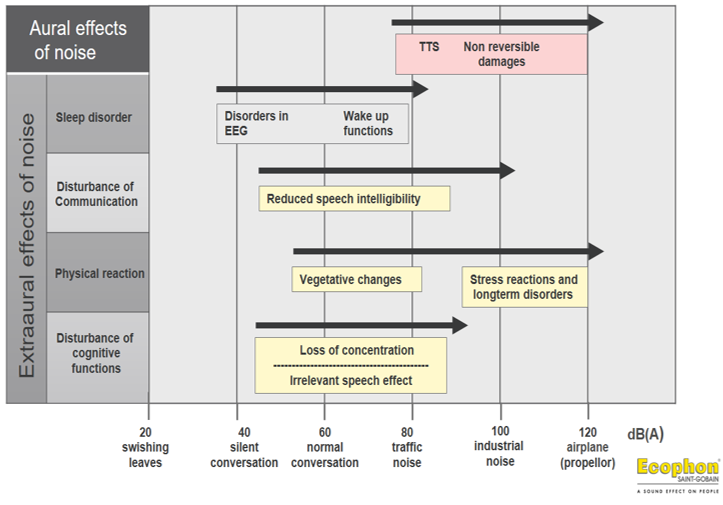
Summary findings:
Stress inducing effects of noise over time for teachers create an ongoing dysregulation in the ergonomic working conditions leading to potential chronic dysregulation. See additional red areas highlighted from the previous model below:
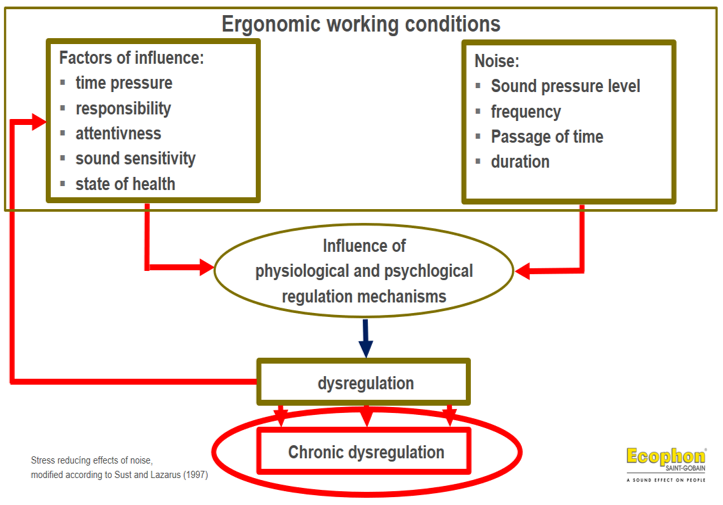
Below is a snapshot of the reduction to the teachers stress before and after acoustic improvement. If we have a look at heart frequency for this teacher during all four lessons (two before and two after acoustic treatment) before and after acoustic treatment, we can see that the heart rate decreased by as many as 10 beats per minute!
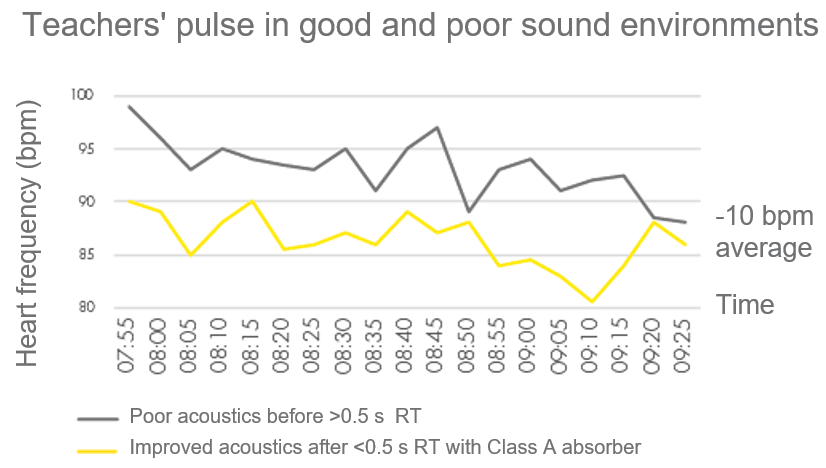
So overall, the stress in teaching depends on the ergonomic parameter of room acoustics.
The better the room acoustics the lower the teacher stress. This was most clear during basic activation, with good acoustics with RT of 0.45s an even distribution of fatigue and activation was observed. In 0.6s RT conditions, fatigue predominates which is not likely to so be sustainable over time.

Link to more about the original stress survey finding 80% of teachers stressed by noise and previous Education Research Summary post on Acoustic Bulletin which refers to several aspects around this comprehensive University of Bremen Study.
References:
Acoustic Ergonomics of School, M. Oberdörster, G. Tiesler (Baua, Research Report: Fb 1071).
“Communication behaviour and workload of students and teachers in highly absorbent classrooms” Tiesler Euronoise2018.

